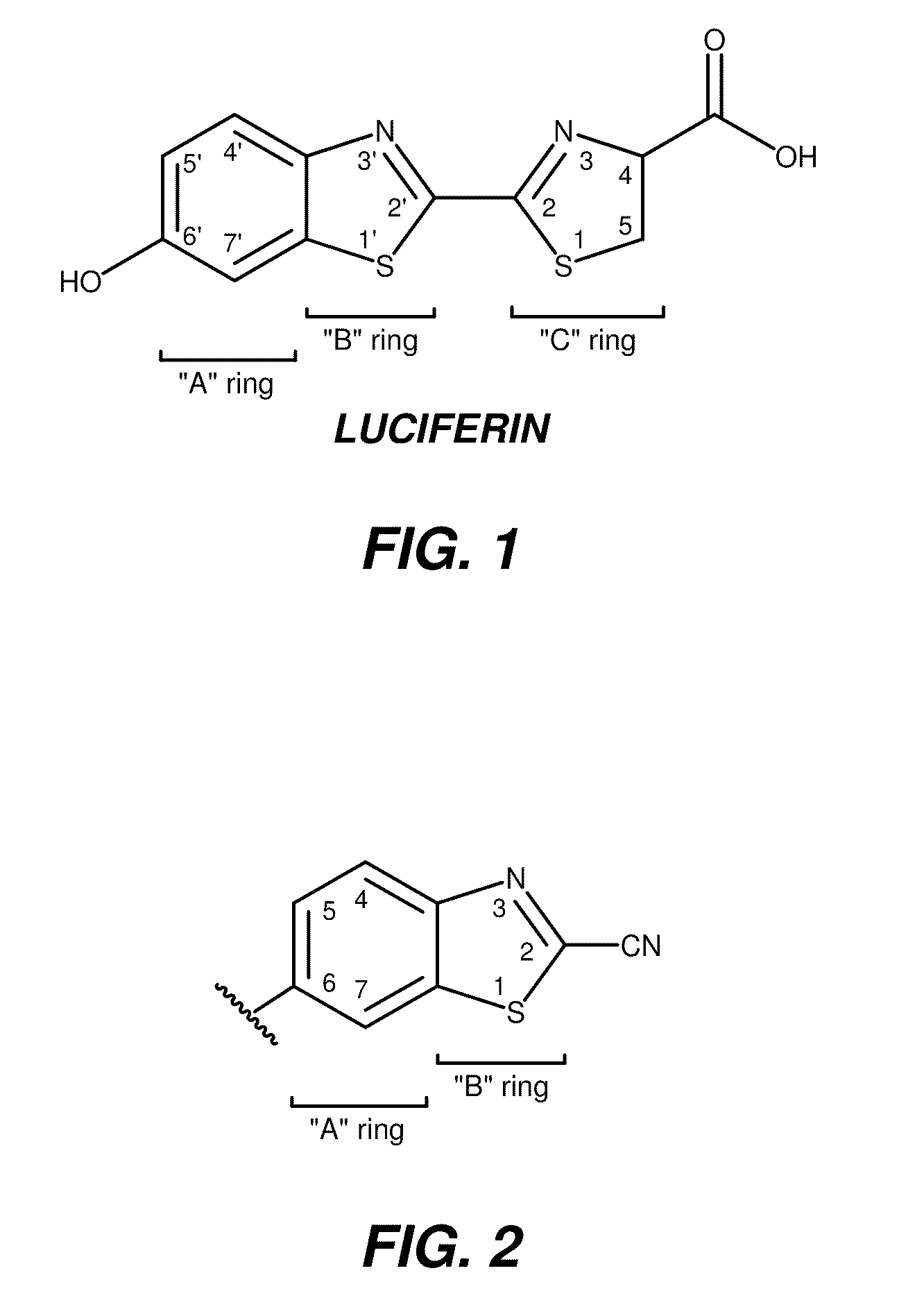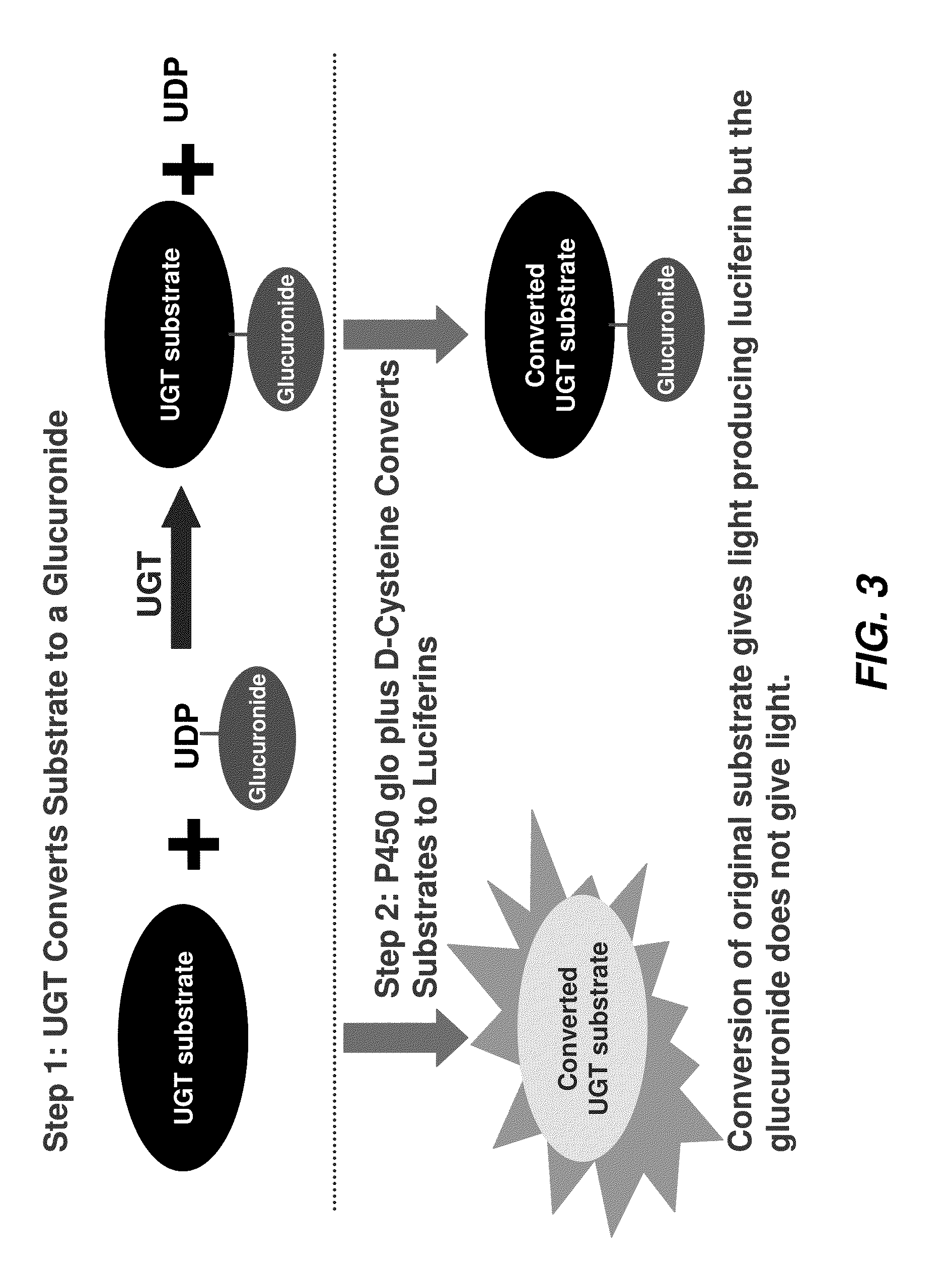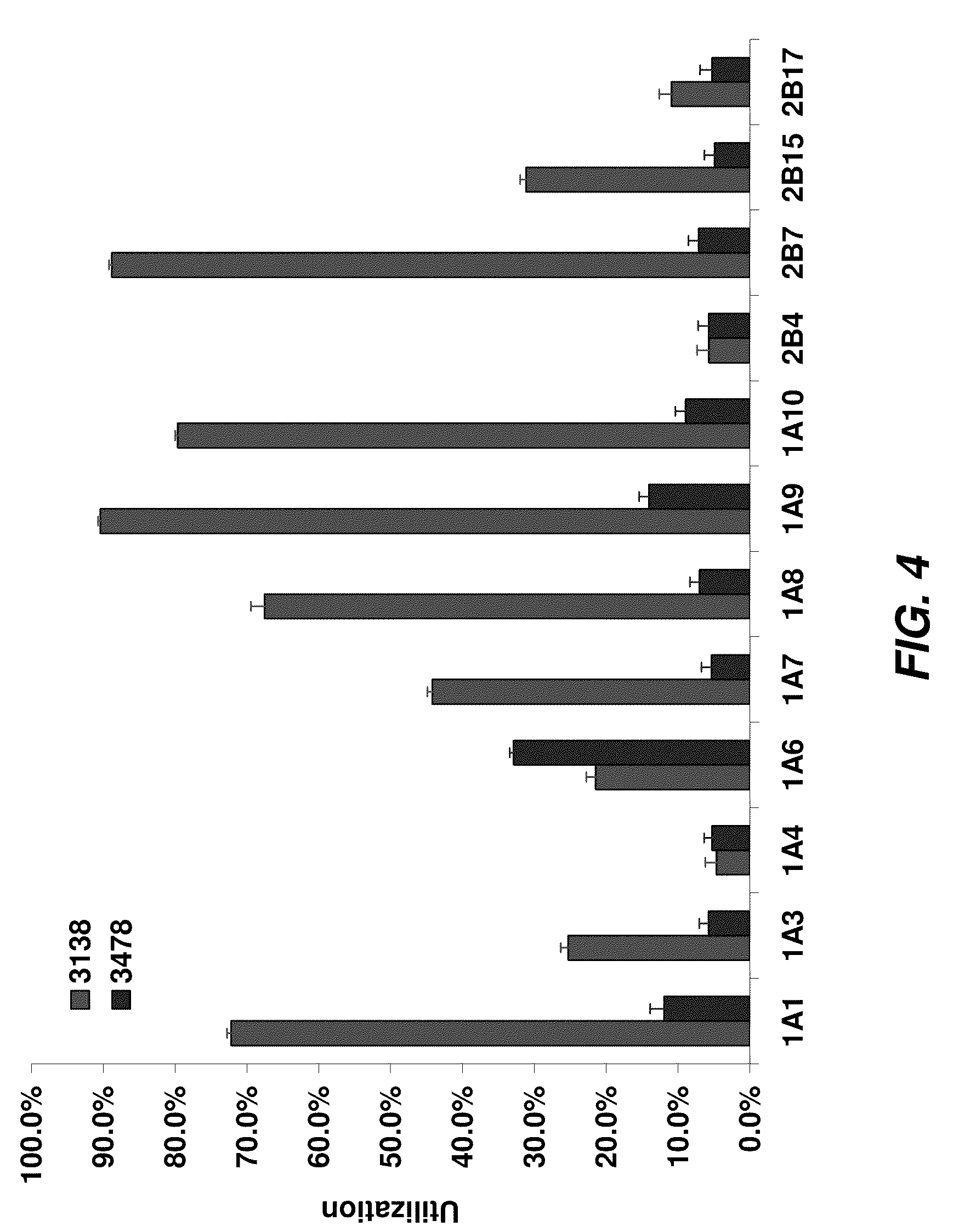Bioluminescent detection of cyanohydroxy benzothiazole compounds
a technology of cyanohydroxy benzothiazole and bioluminescence detection, which is applied in the field of bioluminescence detection of cyanohydroxy benzothiazole compounds, can solve the problems of limited cell based assays, many enzymes of interest do not recognize modified luciferin derivatives, etc., and achieve high throughput formats and eliminate the need for protein precipitation and/or chromatic purification steps
- Summary
- Abstract
- Description
- Claims
- Application Information
AI Technical Summary
Benefits of technology
Problems solved by technology
Method used
Image
Examples
examples 1-7
General Introduction to Examples 1-7
[0434]The invention includes a method of determining activity of the uridine 5′-diphospho-glucuronosyltransferase (UDP-glucuronosyltransferase, or UGT) family enzymes in vitro. Briefly, UGT enzymes from overexpressed insect microsomes (Supersomes™, BD Gentest™) or animal tissue microsomes (Xenotech, BD Gentest™) were incubated with a cyanobenzothiazole substrate of the invention and the cofactor UDP-glucuronic acid (UDPGA) at 37° C. in buffer at physiological pH containing MgCl2 and alamethicin (typically, 50 mM TES, pH 7.5, 8 mM MgCl2, 4 mM UDPGA (Sigma) and 25 μg / mL alamethicin (Sigma)). Following the UGT enzyme reaction, an equal volume of P450-Glo Luciferin Detection Reagent (Promega) containing 15-30 mM D-cysteine-HCl.H2O (Sigma) was added and the plate was mixed and incubated at room temperature, typically for 20-30 minutes. P450-Glo Luciferin Detection Reagent can be prepared by dissolving a vial of Promega Luciferin Detection Reagent (Prom...
example 1
Detection of UDP Glucuronosyltransferase (UGT) Activity with Compounds 3138, 3478, and 3165
[0436]In this example, a series of 12 recombinant UGTs expressed in insect microsomes (Supersomes™, BD Gentest™), as well as the control microsomes not expressing the UGT enzyme, were incubated with compound 3138, compound 3478, or compound 3165 as substrates, with or without the UDPGA co-factor.
[0437]
[0438]After addition of a luciferin detection reagent (LDR) containing D-cysteine, both the substrate and the product were converted to D-luciferins (compound 3478 is already a luciferin derivative before addition of the LDR). Only the unglucuronidated substrate produced light, as shown in FIG. 3, and any substrate glucuronidated by the enzyme does not produce light, resulting in a drop in relative light units (RLU) for that sample.
[0439]Reactions were assembled in a white 96-well plate. Each well contained 20 μL of reaction mixture comprised of 100 mM TES, pH 7.5, 16 mM MgCl2, 50 μg / mL alamethic...
example 2
Utilization of Compounds 3138 and 3165 by Mammalian Microsomes
[0442]The ability of endogenously expressed UGT isozymes to utilize compounds 3138 and 3165 as substrates was determined in a similar manner to the assays with recombinant microsomes (Example 1). With compound 3138, reactions were run for 15 minutes at 37° C. in 50 mM TES, pH 7.5, 8 mM MgCl2, 25 μg / mL alamethicin, 0.1 mg / mL mammalian microsomes or 0.2 mg / mL recombinant Supersomes, and 50 μM compound 3138, plus or minus 4 mM UDPGA (test reaction and control, respectively). With compound 3165, reactions were run for 2 hours at 37° C. in 50 mM TES, pH 7.5, 8 mM MgCl2, 25 μg / mL alamethicin, 0.2 mg / mL mammalian microsomes or recombinant Supersomes, and 50 μM compound 3165, plus or minus 4 mM UDPGA (test reaction and control, respectively). Tissue microsomes were obtained from Xenotech LLC or BD Gentest. Addition of LDR plus cysteine and data analysis was performed in the same manner as for the recombinant Supersome panel scree...
PUM
| Property | Measurement | Unit |
|---|---|---|
| pH | aaaaa | aaaaa |
| pH | aaaaa | aaaaa |
| pH | aaaaa | aaaaa |
Abstract
Description
Claims
Application Information
 Login to View More
Login to View More - R&D
- Intellectual Property
- Life Sciences
- Materials
- Tech Scout
- Unparalleled Data Quality
- Higher Quality Content
- 60% Fewer Hallucinations
Browse by: Latest US Patents, China's latest patents, Technical Efficacy Thesaurus, Application Domain, Technology Topic, Popular Technical Reports.
© 2025 PatSnap. All rights reserved.Legal|Privacy policy|Modern Slavery Act Transparency Statement|Sitemap|About US| Contact US: help@patsnap.com



